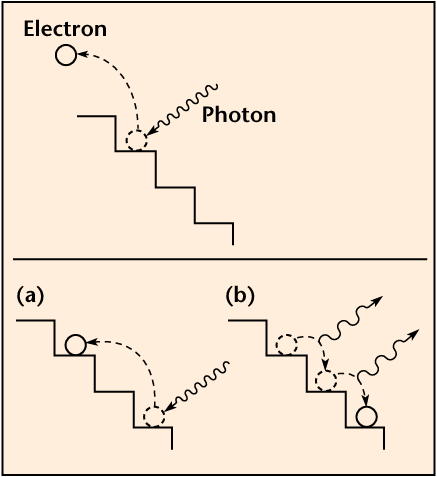Photons
 Photons are separate, individual bundles of electromagnetic energy. They can be described as "packets of energy".
Photons are separate, individual bundles of electromagnetic energy. They can be described as "packets of energy".These "packets of energy" can provide energy to lets say an electron. Once the photon meets the electron it gives it energy to move, thus resulting in kinetic energy, allowing it to move to a higher energy level. However when the electron moves from a higher energy level to a lower energy level a photon is released. This picture demonstrates a perfect example. To put this into context the stairs are electron shells inside an atom which show electrons moving from different energy levels by releasing a photon or absorbing a photon.
We can actually work out the energy of a photon by using this formula : Energy of a photon (J)=plancks constant (J/s) * frequency (Hz)
plancks constant, being a constant, is 6.63*10^-34 J/s
-In a vacuum, all electromagnetic waves travel at the same speed, at the speed of light 3.0*10^8 m/s
-Photons are emitted when a charged particle loses energy, for example when an electron "de excites" which means it moves to a different shell of a lower energy.

No comments:
Post a Comment